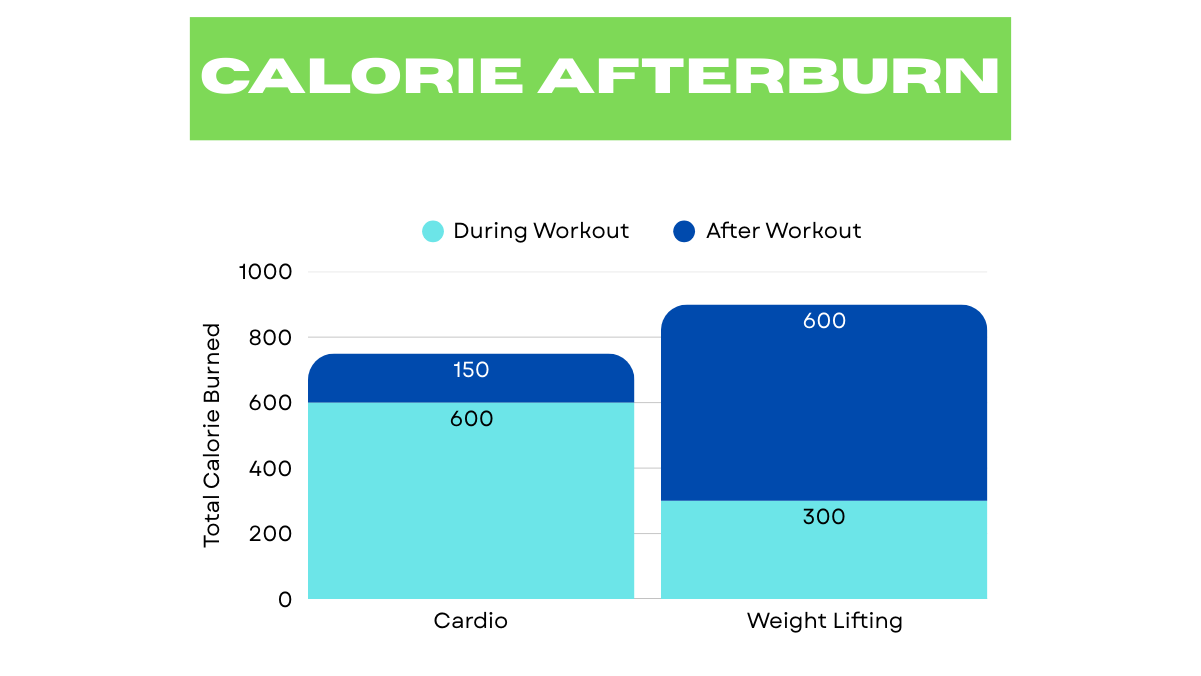Cardio can burn up to 600 calories an hour. Lifting weights? Sometimes less than half that. So why are more fitness pros ditching cardio for the barbell? Because when it comes to long-term fat loss, the scale isn’t the only thing that matters.
In this article, we’ll break down the real fat-burning power of cardio vs weight lifting. Whether your goal is to lose belly fat, boost metabolism, or simply feel stronger and leaner—this guide will help you choose the smarter path.
Table of Contents
Quick Comparison
If you’re short on time:
- Cardio helps you burn more calories during the workout.
- Lifting helps you burn more calories after the workout by building lean muscle.
- For short-term fat loss, cardio gives fast results.
- For long-term fat loss and body recomposition, lifting is the winner.
👉 Verdict: If you want sustainable fat loss and a lean, toned look—weightlifting wins.

Features
Cardio:
- Burns high calories per session (400–700 calories/hour)
- Improves heart health and endurance
- Great for beginners and quick weight loss goals
Weight Lifting:
- Builds lean muscle (which burns fat passively)
- Boosts metabolism for 24–48 hours after training (EPOC effect)
- Improves body shape and strength
Personal Experience
I spent months relying on cardio. Sure, I dropped some weight, but I also lost muscle and felt drained. Once I started focusing on lifting and added more protein and recovery support into my routine, my results skyrocketed. I wasn’t just losing fat—I was building a body I felt proud of.
Here’s what really happened when I stopped doing cardio and focused only on lifting—the results might surprise you.
💡 Pro tip: If you’re combining lifting with clean eating, I highly recommend checking out the 21-Day Smoothie Diet. It’s more than just smoothies—it’s a reset for your digestion, inflammation, and energy levels. Great if you want to lean out faster without starving yourself.

Pricing
Cardio:
- Low to no cost (running, home workouts, jump rope)
- Gym or class memberships (optional)
Lifting:
- Higher initial investment (weights, gym membership)
- Long-term ROI for fat loss and body transformation
Pros & Cons (H2)
| Feature | Cardio 🏃♂️ | Lifting 🏋️ |
|---|---|---|
| Fat Burn (Short-Term) | ✅ Burns more calories per session | ❌ Lower immediate calorie burn |
| Muscle Gain | ❌ Doesn’t build muscle | ✅ Builds lean muscle (boosts resting metabolism) |
| Afterburn Effect (EPOC) | ❌ Minimal | ✅ High (burns more calories post-workout) |
| Long-Term Fat Loss | ⚠️ Requires consistency and diet | ✅ More sustainable due to muscle mass |
| Heart Health | ✅ Improves cardiovascular health | ✅ Improves heart health under resistance |
| Body Recomposition | ❌ Less effective | ✅ Helps reduce fat and build muscle together |
| Time Efficiency | ✅ Great for quick calorie burn | ⚠️ Requires proper technique and recovery |
| Beginner Friendly | ✅ Easy to start (e.g., walking, running) | ⚠️ Requires guidance for form and programming |
Alternatives
Looking for a hybrid solution?
- HIIT workouts blend the best of both worlds
- Bodyweight strength training is great for beginners
- Circuit training can raise your heart rate and build muscle
⚡ If you’re strength training and want an added edge, check out Electroslim. It’s a natural metabolism booster designed to complement resistance training. Many users say it helped them break through stubborn fat-loss plateaus.
Even with the perfect workout split, it’s easy to overlook the small daily behaviors that sabotage results. These 7 everyday habits might be silently killing your fat loss progress—don’t let them.
Other Relevant Categories
| Goal | Best Option |
|---|---|
| Quick weight loss | Cardio |
| Sustainable fat loss | Lifting |
| Tone and shape | Lifting |
| Stress relief | Cardio |
| Boost metabolism | Lifting |
Conclusion: Who is the Winner?
Cardio might be your go-to if you’re aiming for fast weight drop and enjoy running or cycling. But for most people who want to lose fat, stay lean, and keep it off—lifting weights is the better long-term choice. It doesn’t just burn fat—it reshapes your body.
🎯 If you’re starting out or hitting a plateau, tools like the 21-Day Smoothie Diet help reset your system so you can actually see the effects of your lifting sessions.
💥 Pair it with Electroslim and watch your energy rise and your fat start to drop faster.
If you want a no-fuss approach to fat loss using weightlifting, this simple formula helped me lose 20 pounds and keep it off—and it can work for you too.
Frequently Asked Questions (FAQ)
Which is better: cardio or weight training?
It depends on your goals. Cardio is great for heart health and burning calories quickly, while weight training builds lean muscle, which helps burn more calories at rest. For sustainable fat loss and a toned body, weight training usually offers better long-term results.
Do you lose weight faster with cardio or weight training?
Cardio often leads to quicker weight loss in the short term because it burns more calories per session. However, weight training helps build muscle, which increases your resting metabolic rate—making it easier to keep the weight off long term.
Can I skip cardio and just lift weights?
Yes, especially if your main goal is fat loss and muscle definition. Lifting weights with a clean, calorie-controlled diet can be incredibly effective. Adding some light cardio (like walking or cycling) can still support heart health and recovery.
Is cardio or weights better for belly fat?
Weights. While cardio burns calories, lifting builds muscle that raises your metabolism and reduces overall body fat—including stubborn belly fat—over time. You can’t spot-reduce fat, but lifting helps reshape your entire body.
How many times a week should I lift weights for fat loss?
3–4 times per week is ideal for most people. Focus on full-body workouts with compound movements like squats, deadlifts, and presses. Combine that with a solid nutrition plan to see the best results.
Should I do both cardio and weight lifting?
If you have the time and energy, combining both can give you a balanced approach. Just make sure you’re not overtraining. A common split is 3 days of lifting, 2 days of cardio. Always prioritize recovery.
Why does lifting help burn more fat after workouts?
Lifting weights triggers the “afterburn” effect (EPOC), meaning your body continues to burn calories even after the session ends. Plus, more muscle means a higher resting metabolic rate—your body becomes more efficient at burning fat even when you’re doing nothing.
What should I eat to support fat loss with weight training?
Focus on whole, nutrient-dense foods: lean protein, healthy fats, complex carbs, and fiber. To speed up results, a structured meal plan like the 21-Day Smoothie Diet can help you reduce inflammation, control cravings, and support lean muscle retention.
![You are currently viewing Cardio vs Weight Lifting [2025] – Which Burns More Fat in the Long Run?](https://xiglife.com/wp-content/uploads/2025/04/Copy-of-Cardio.png)


